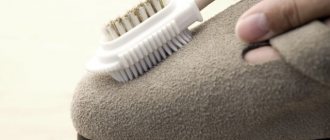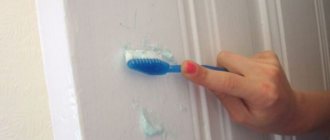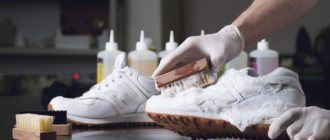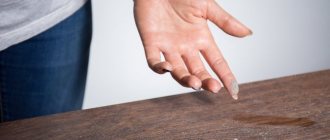Updated July 20, 2022 944 Author: Dmitry Petrov
Hello, dear readers of the KtoNaNovenkogo.ru blog. Have you ever come across words that you definitely heard somewhere, but could not define them?
Or the opposite situation, when you have probably seen this or that object, but do not know what it is actually called. This happens quite often, and the clearest example of this is pipidastr
.
Not every person will be able to say what it is right away, so we will try to understand in detail this funny word and its origin so that you no longer have any questions.
The true meaning of the word "pipidastr"
Until recently, it was believed that there was no such term at all and that it was invented by fans of “funny” Internet memes. This word really does not exist in Russian sources, and it is correct, because it came to us from the English language. Pipidastras are fluffy multi-colored brushes for brushing away dust. Agree, we have seen this device many times on TV, in stores and on the Internet, but did not know its name. This panicle cannot be called a pom-pom, because apart from the presence of fibers, nothing in common between a pom-pom and a pipidastra.
What are they?
Today there are the following types of pipidastra:
- made of feathers and down (prototype of modern pipidastra);
- synthetic models (made of polypropylene);
- products made from ostrich feathers;
- devices made of microfiber or other fabric;
- electric models.
Formally, only those panicles that are made of polypropylene (due to the origin of this term) and have a multi-colored color can be called pipidastra.
This common Chinese product can be found in any hardware store. However, in our environment it is customary to use this word in the context of similar devices.
The effectiveness of this device is subject to much controversy. Some people really can’t imagine cleaning without a pipidastra, some use it as a toy for pets, and some have not been able to fully appreciate this gadget-assistant in the household.
By the way, you can often see a funny broom in staged scenes with maids brushing dust from fragile objects or all kinds of surfaces (in Brazilian TV series, commercials and more).
In cinema, this thing has become an indispensable item in the hands of employees in large houses and a good alternative to rags, from an aesthetic point of view.
Etymology
Until now, those who like to understand complicated stories cannot say exactly where the word “pipidastr” came from. According to one of the most common versions, it is a Russian duplicate of the name of the company of the first manufacturer PP Duster. Perhaps this is not even the name of the producing organization; it is quite likely that it is a common abbreviation of some longer name. According to other guesses, everything is more or less clear with the word duster, this is the name of the company of the same name that produces electric dust brushes, but with the first part of the name everything is much more complicated. Perhaps it came from the English “peppy”, which translates as charged with energy, fast. The heroine of the children's fairy tale Pippi Longstocking immediately comes to mind, but again all this is too dubious, namely the use of a woman's name as a name for a brush. At least, the proof of this version is a more or less explainable translation, that is, “quick brush.” Many foreigners confirm the presence of “peppi dastra” in their vocabulary; it is often used by cleaners or housewives, but still no one can say for sure about the origin of the word. According to third guesses, pipidastra is puppy duster, what do puppies have to do with it is still unclear. Perhaps the brushes are as fluffy and restless as a puppy. It is still unknown who invented the pipidastra, so it is difficult to judge the reason for such a strange name.
The only thing that can be said for sure, judging by all these versions, is that pipidastra is something fast, energetic and fluffy, a kind of electric broom. Based on this definition, then such a piquant name is completely justified.
Analogs
In addition to the fluffy broom, there is also an antistatic brush that sweeps away dust from small elements of home decor. Double-sided tongs, which look like a hair straightener, will help you easily clean dust from blinds, which are not so easy to remove even with a pipidastra.
An equally important advantage of such cleaning is the absence of the need to use chemicals. To avoid additional poisoning and increase the allergenic load on the body, an excellent opportunity to remove the EU is by using a simple fluffy brush.
Misconception
Pipidastras are pom-poms that cheerleaders wave during their performances. It is not true! There are a lot of jokes on the Internet about the fact that the support group performs with nothing more than pipidastras. Strange, but this opinion has spread and it is now difficult to knock it out of the heads of users who listen to all the jokes.
This misconception did not appear out of nowhere, since pom-poms for cheerleading performances are called Pom Pom (from this word, by the way, the word “pom-pom” came from), and their resemblance to a whisk gave them the second name duster, if you combine the first and second designations, then it turns out PP Duster, which a Russian person will read as “pipidastr”.
The word pipidastr is quite funny for us, no matter what associations arise when pronouncing it. However, now you need to use it correctly. Pipidastras are fluffy multi-colored cleaning brushes, and not some kind of offensive curse.
Fortinbras with Umslopogas
Voldemar Yanovich (Vladimir Ivanovich) Chobur as Fortinbrass.
"Hamlet" staged by the Leningrad State Theater under the direction of S.E. Radlova, 1938 Furniture workshops of Fortinbrass at Umslopogas im. Belshazzar is a masterpiece of literary naming. Almost like a hostel named after monk Berthold Schwartz. This name can be found in one of my favorite literary works - the novel “12 Chairs” by Ilf and Petrov.
Here is what Korney Ivanovich Chukovsky writes about this name in his book “Alive as Life”: “They used the names Fortinbras and Umslopogas just as wittily. The first name belongs to a character from “Hamlet”, the second - to the hero of the novel by the English novelist Rider Haggard. The authors of “The Twelve Chairs,” pretending that they did not suspect this, jokingly invited the reader to perceive both names as composite names of two institutions (like the Moscow City Council, the Rail Council, etc.). That is why in their wonderful parody of theater posters of the 20s the following line appeared: “Furniture - from the woodworks of Fortinbras under Umslopogas.”
This hilarious Umslopogas, inspiring the idea of the decline of the mind, was so similar to the compound words of that time that it became a common name for one very large publishing house, long abolished. That’s what we said then: “Here in Umslopogas...”
Umslopogas and his sister Nada. Illustration for Henry Rider Haggard's novel Nada.
Perhaps I’ll clarify: Umslopogaas is a character in Henry Rider Haggarad’s novel Nada. This is a young man, owner of the Iron Sovereign axe, “Culprit of Moans”, later nicknamed Bulalio the Killer.
Lush furry dust pompoms
Nowadays, cheerleaders' pom-poms look a little different, but they still have the same name.
Visually, pipiadstras are very attractive: fluffy, multi-colored, iridescent, they could often be seen in foreign TV series, where they were used to wipe away dust from luxurious interior items. Do they have practical significance?
Ordinary house dust can have extremely negative effects on human health. Constantly inhaling dust particles can lead to allergies or even asthma.
Over the course of a year, up to 10 kg of dust passes through a typical apartment. Cleaning with a rag leaves streaks, and brushes can only sweep away dust.
What is good about a special dust broom?
The broom not only collects dust efficiently, but also does not leave streaks. It can easily clean the farthest places and secluded corners, and dust, as you know, collects there.
The dust broom is made of soft synthetic fibers that are attached to a rod. It turns out something like a fluffy tail.
In addition to synthetics, the fibers of such panicles can be of natural origin. Excellent pipidastras are obtained from bird feathers, horse hair, and sheep wool. These panicles look very good, collect dust well and will appeal to lovers of all things natural. It’s a pity that they themselves are more finicky to clean and can lose their appearance from exposure to dust.
Artificial pile is made from rubber, everyone’s favorite microfiber and, of course, polypropylene. Experience-tested brooms with artificial fibers have excellent reviews, because they are specially designed to absorb dirt and attract dust as much as possible. And they can be cleaned even in cases of high dirt absorption.
In addition, they do not contain hard parts and do not harm even the most delicate surfaces. Like many cleaning items, dust brooms have gone through their evolution. Now we can say that the most convenient and functional are electric models. This electrical device saves time even in comparison with a conventional synthetic dust broom. There are many brooms on sale now, which vary in function, design and price.
Antistatic broom
The antistatic broom has a simple design: a plastic handle ends in a ring, the pile is long and fluffy. You can often see such panicles in rainbow colors or in a pink design, which seems to hint that working with such a tool is just a holiday. Polypropylene is always used for the pile, since it is the material that has the antistatic effect.
Such brooms are convenient not only for brushing off dust: allergy sufferers were also grateful to this invention. Pipidastras with an antistatic effect prevent dust from flying around. And you won’t have to come into contact with dust. You just need to lean the base of the broom against the surface and rotate the handle. After this, all dust, even including what has settled on small parts and surfaces, will be collected.
To enhance and activate the antistatic effect on dust, rub the pile on an artificial fabric.
The static duster is well known - a multi-colored panicle that was one of the first to appear in our country. With its help, several generations of children have enjoyed participating in cleaning. For many people, this is exactly what pipidaster is. Unfortunately, even a well-made brush was not very durable; it faded quite quickly and became less and less fluffy from time to time. Although this turned few people away from the static duster, which many still strive to buy.
Electric broom
The design of this panicle is not much different in appearance from the usual one. Only the handle is more massive and the weight is heavier. The volume of the pen is used to mark as many batteries as possible. There is an activation and speed control button on the handle. Typically, such a broom will cost more, but will also be more multifunctional. The kit may include several additional brushes and attachments.
Pipidastras from plastic bags
In order to make pipidastra from bags, you will need to take quite a large amount of them. The more bags you use, the more magnificent the pompom will be. The most budget-friendly option is to use garbage bags. The most beautiful option is holiday bags for wrapping gifts, or wrapping roll paper.
Step-by-step instructions with photos
Below are different options for making shaggy ones:
- The bags are straightened and stacked. 30 - 35 pieces will be enough.
- In order for the bags to lie flat when cut, without slipping, they are pinned along the center line, or stitched with large stitches.
- Trim 3–4 cm around the perimeter, thus removing unnecessary folds and handles.
- In the area of stitching or chipping, fold in half.
- Make cuts in the direction from the edge to the fold, not reaching 5 cm.
- Carefully unfold the workpiece and remove the pins.
- As a result, we got cuts along the edges, and in the middle there was a smooth, whole area.
- Start rolling this area into a tube, starting from the edge.
- Wrap the resulting tube with tape to create a holder.
- Fluff the resulting fringe along the edges, separating the ribbons from each other.
This is interesting: if the strips are short, you will get a pompom, and if the strips are cut long, you will get a plume.
- Cut off the handles of the bag. The cuts are not made across the entire width, but not a few centimeters from the edge. The free area will become a stick - a holder.
- The untouched area is rolled up into a tube.
- The stick is wrapped with tape and decorated with wrapping paper.
- Separate the fringe strips and fluff them up.
Plastic bags are stacked on top of each other. All unnecessary things are cut off: handles, folds. Cut into even strips of required length
This should be done carefully to prevent them from spreading. The strips are neatly stacked parallel to each other and tied in the center with strong thread
A holding stick is attached to the junction. Fluff the pompom with your hands, separating the ribbons.
Pipidastras from New Year's rain
Pom-poms made using rain look the most impressive. They shine and shimmer beautifully, especially if material of contrasting colors was used.
- The raindrops are carefully laid in a bunch of the required thickness.
- They are tied in the center with a strong thread. Several of these blanks are made - the more of them, the more magnificent the panicle will be.
- A stick-holder is attached to the dressing site. During attachment, it is advisable to distribute the bunches around the stick, then the panicle will look more neat.
- The length of the plume's raindrops is adjusted - cut to the required size.
- Wrap the top of the stick with beautiful adhesive tape or wrapping paper.
Pipidastras from yarn for washcloths
The threads used to knit bath washcloths are perfect for creating fluffy designs. They have a wide range of colors and are easy to use. To make one pompom, one skein will be enough.
- Turn the four-legged stool upside down.
- Start wrapping the rope around the two legs.
- Find the middle of the winding and tie a secure knot in this place.
- Cut the resulting loops on the sides.
- Attach the handle-holder with threads and tape.
- Decorate the handle.
Colorful pom-poms are increasingly gaining popularity. They are not only an indispensable attribute in cheerleading. They are used in bright shows and at children's matinees. Made with your own hands, they will decorate any holiday and save the family budget.
A visual video will show you how to easily make decorations with your own hands.











